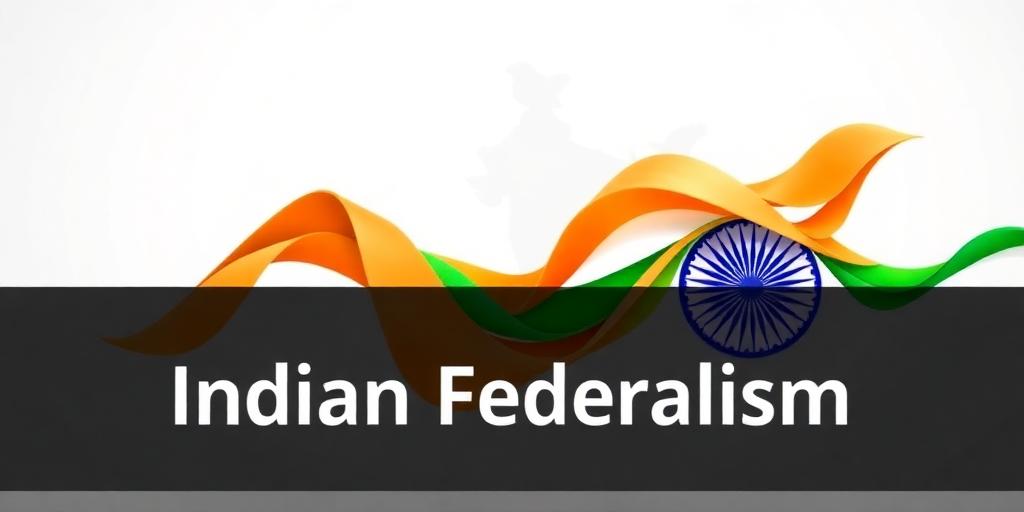The Evolving Trajectory: Unpacking the Future of Federalism in India
Federalism, a cornerstone of India's constitutional architecture, has been a dynamic and often debated concept since the nation's inception. Designed to accommodate the immense diversity of a subcontinent, India's quasi-federal structure balances a strong central authority with significant state autonomy. However, as the nation navigates complex socio-economic and political landscapes, the future of federalism in India faces renewed scrutiny and evolving challenges. Understanding these dynamics is crucial for discerning the trajectory of India's governance structure.
The Foundational Pillars and Their Evolution
India adopted a federal system not as a result of a compact among sovereign units, but as a deliberate constitutional choice to manage its vast cultural, linguistic, and regional disparities. The Constitution delineates powers between the Union and the States through three lists—Union, State, and Concurrent—along with a residuary power vested in the Centre. Over the decades, this framework has adapted, often through judicial interpretation and political practice. The Supreme Court's pronouncements, particularly those upholding the 'basic structure' doctrine, have reinforced federal principles, albeit within a unitary bias.
Contemporary Challenges to Indian Federalism
The current landscape presents several formidable challenges to the traditional understanding and practice of Indian federalism:
- Fiscal Federalism: The Goods and Services Tax (GST) regime, while a significant economic reform, has altered the fiscal autonomy of states. While designed to foster 'one nation, one market,' concerns persist regarding revenue sharing mechanisms and the extent of states' financial independence. Centralized tax collection and dependency on central grants can strain state finances and limit their policy space. Debates around the equitable distribution of resources and the formula for vertical and horizontal devolution remain perennial issues.
- Political Centralization: The rise of a dominant single-party rule at the Centre, juxtaposed with diverse political leadership in states, often leads to friction. The role of the Governor, a central appointee, in state affairs and the use of Article 356 (President's Rule) have historically been points of contention, frequently perceived as undermining state autonomy. The increasing centralization of policy-making, even in areas falling under state jurisdiction, further tests the federal balance.
- Administrative Disparities: While states are primarily responsible for public order, health, and education, central schemes often dictate the implementation modalities and resource allocation, sometimes without adequately considering local specificities. This can lead to inefficiencies and a dilution of state-specific policy initiatives.
- Emergence of Cooperative and Competitive Federalism: Recent years have seen an emphasis on 'cooperative federalism,' encouraging collaboration between the Centre and states, and among states themselves. Simultaneously, 'competitive federalism' is promoted, where states compete for investment and development opportunities. While these concepts can be beneficial, they also require robust institutional mechanisms to ensure fair play and prevent the marginalization of less developed states.
The Path Forward: Strengthening Federal Dynamics
To ensure a resilient and effective federal structure, several key areas require attention:
- Revisiting Fiscal Architecture: A continuous review of the GST framework, the role of the Finance Commission, and mechanisms for compensatory grants is essential to bolster states' fiscal capacity and reduce their dependence on the Centre. Empowering states with greater flexibility in managing their finances is paramount for true federal autonomy.
- Institutional Reinforcement: Bodies like the Inter-State Council and the National Development Council need to be revitalized as genuine forums for dialogue, consensus-building, and conflict resolution, rather than mere consultative bodies.
- Respecting Constitutional Boundaries: Both the Centre and states must adhere to the spirit of the Constitution, respecting the division of powers. Restraint in the use of centralizing provisions and a greater emphasis on collaborative governance are vital for a healthy federal system.
- Judicial Vigilance: The judiciary will continue to play a critical role in upholding the federal balance, interpreting constitutional provisions, and arbitrating disputes between the Union and states.
- Decentralization Beyond States: Strengthening local self-governance through Panchayati Raj Institutions and Municipalities can deepen democratic participation and make governance more responsive at the grassroots level, further enhancing the federal spirit.
Conclusion
The future of federalism in India is not merely an academic debate; it is intrinsically linked to the nation's unity, stability, and progress. It will be characterized by a continuous negotiation between centralizing tendencies and regional aspirations, economic imperatives and social justice. As India matures, its federal structure must evolve, embracing greater decentralization, fostering genuine cooperation, and ensuring equitable development across all its diverse units. The robustness of Indian federalism will ultimately depend on the political will to uphold constitutional principles and adapt to the changing realities of a complex, evolving nation, strengthening Indian federalism for generations to come.









